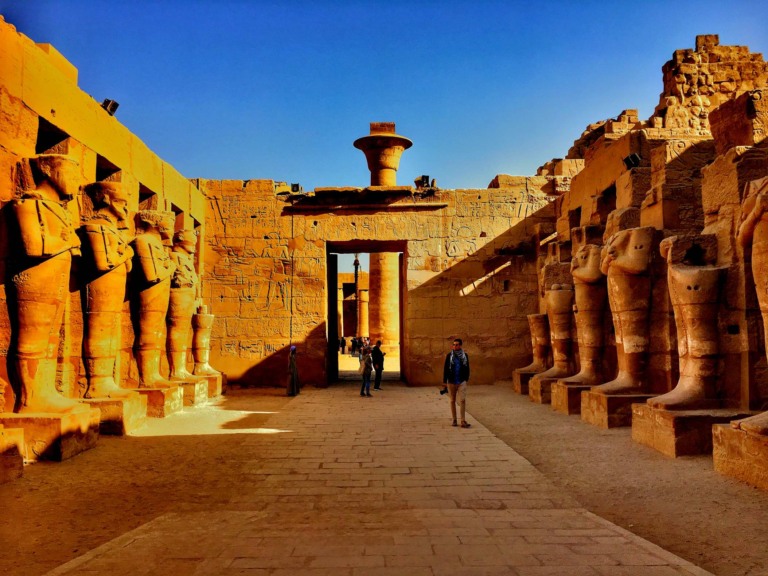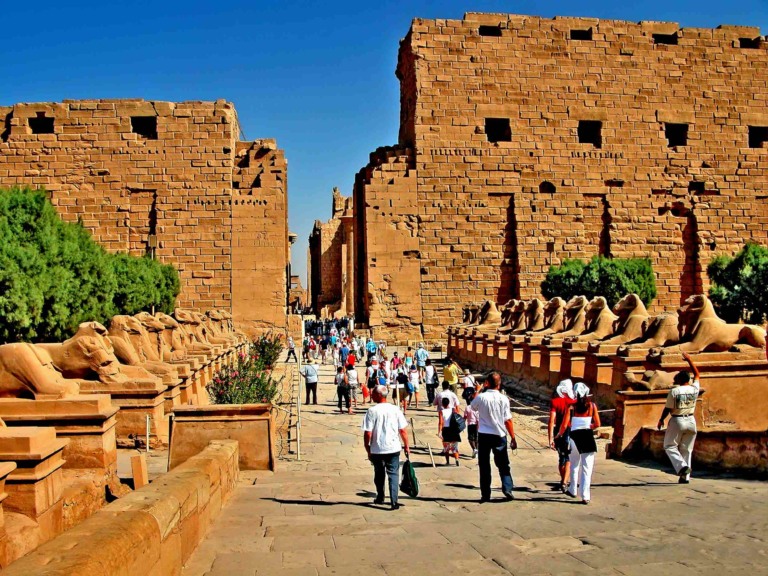The Valley of the Kings is a famous archaeological site located on the west bank of the Nile River in Luxor, Egypt. It is renowned for being the burial place of many pharaohs and powerful nobles of the New Kingdom period of ancient Egypt, approximately from the 16th to the 11th century BCE. Here are some key facts about the Valley of the Kings:
Valley of the Kings Facts
1. Historical Significance: The Valley of the Kings served as the principal burial site for pharaohs and nobles during the New Kingdom, which was a time of great wealth and power for ancient Egypt. It is part of the larger Theban Necropolis, which also includes the Valley of the Queens, the Tombs of the Nobles, and other burial sites.
2. Pharaohs’ Tombs: The valley contains the tombs of some of Egypt’s most famous pharaohs, including Tutankhamun, Ramses II, Seti I, and Hatshepsut. These tombs were intricately decorated with hieroglyphics and wall paintings depicting scenes from the pharaoh’s life and their journey to the afterlife.
3. Hidden Treasures: The discovery of the tomb of Tutankhamun by Howard Carter in 1922 is one of the most significant archaeological discoveries in history. The tomb was nearly intact and contained a wealth of treasures, including the famous golden mask of Tutankhamun.
4. Architecture: The tombs in the Valley of the Kings are typically cut into the rock of the desert hills. They consist of corridors, chambers, and burial chambers. The architecture of the tombs evolved over time, becoming more complex and featuring deeper burial chambers.
5. Decoration: The walls of the tombs are adorned with elaborate paintings and hieroglyphics that provide insights into ancient Egyptian religious beliefs, mythology, and rituals. The scenes were meant to help guide the pharaoh’s soul through the afterlife.
6. Burial Practices: The Valley of the Kings was chosen as a burial site because of its natural defensibility and the belief that the mountains surrounding it represented the mythical realm of the afterlife. Pharaohs were buried here in an attempt to protect their resting places from tomb robbers.
7. Tourism: Today, the Valley of the Kings is a major tourist attraction in Egypt. Visitors can explore several tombs that are open to the public, although not all of them are accessible at any given time to help preserve the artwork and structures.
8. Conservation: Due to the fragile nature of the tombs and the damage caused by tourism, efforts have been made to conserve and restore the tombs. Some have limited visitor access, and strict rules are in place to protect these invaluable archaeological treasures.
The Valley of the Kings continues to be a site of great historical and archaeological importance, shedding light on the beliefs and practices of ancient Egypt. It remains a symbol of the grandeur and mystery of this ancient civilization.
Valley of the Kings Burials
9. Location: The Valley of the Kings is a historically significant site situated in Upper Egypt, on the western bank of the Nile River. It served as the burial ground for the pharaohs and nobles of the 18th, 19th, and 20th dynasties of ancient Egypt, spanning from 1539 to 1075 BCE.
10. UNESCO World Heritage Site: This area is part of the broader Ancient Thebes, along with Luxor, Karnak, and the Valley of the Queens, and has been designated as a UNESCO World Heritage Site since 1979.
11. Ongoing Archaeological Work: Archaeologists have been working to determine the precise number of tombs in the Valley of the Kings, though many have already been uncovered. These tombs were hewn into the rock of the valley and constructed using various types of stone, including limestone, soft marl, and shale, which came from different regions.
Limestone, while stable, is often used for building. In contrast, shale, which expands when wet, can lead to the erosion and alteration of the surrounding rocks. This has caused some tombs to change shape over time and possibly suffer damage.
12. Number of Tombs: As of 2011, researchers had confirmed the existence of 64 tombs, with the possibility of more yet to be discovered. Notably, the 63rd, 64th, and potentially the 65th tombs were uncovered for the first time since the 1920s, opening up the possibility of new discoveries aided by ground-penetrating radar technology.
13. Tombs of Pharaohs: The 62 known tombs are located in the hills behind Dayr al-Bahri. While they vary in layout and decoration, they typically feature descending hallways with deep pits and pillared chambers or vestibules designed to deter tomb robbers.
At the end of these passageways lies a burial chamber containing a stone sarcophagus for the pharaoh’s mummy, as well as storage rooms for the king’s belongings intended for use in the afterlife. The walls of these tombs are adorned with intricate sculptures and paintings depicting the pharaoh’s journey through the underworld, accompanied by gods and magical inscriptions from funeral texts.
14. Book of Gates: Various ancient Egyptian books, such as the “Book of Gates” and the “Book of That Which Is Aboard the Underworld,” describe the pharaoh’s journey through the afterlife, including the trials and challenges they must face. These texts offer different but not necessarily contradictory perspectives on the afterlife and the pharaoh’s journey.
Throughout history, many of the tombs in the Valley of the Kings were cleared out, with some of their contents stolen during the New Kingdom period. The 21st dynasty later emptied many tombs to safeguard royal mummies and valuable burial items.
By the 1st century BCE, Greek pilgrims could visit about 40 of the tombs, and Coptic monks repurposed some of them, leaving their names on the walls. Tutankhamun’s relatively small tomb, protected by debris from a later tomb, was the only one to remain largely undisturbed.
15. Tutankhamun’s Tomb: Tutankhamun’s tomb, discovered in 1922, contained an astonishing array of jewels and artifacts, which are now on display in the Egyptian Museum in Cairo. These treasures offer a glimpse into the opulence of a great pharaoh’s burial during the height of the Egyptian empire.
Among the notable tombs is that of Queen Hatshepsut, who had the longest tomb at approximately 700 feet (215 meters) in length, with the entrance about 320 feet (100 meters) into the rock. Another significant tomb, known as “Number 5,” is the largest and most complex in the Valley of the Kings.
This tomb was constructed to hold the remains of several of Ramses II’s sons. While initially overlooked, it was rediscovered in the late 1980s and extensively excavated in the 1990s, revealing a network of passages and chambers.
The Valley of the Kings remains a captivating site of archaeological and historical significance, offering a window into the beliefs, customs, and grandeur of ancient Egypt’s royalty.






